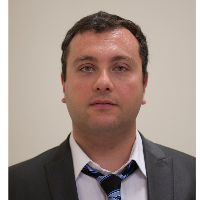Preprint
Article
Cosmic Ray Extremely Distributed Observatory
Altmetrics
Downloads
602
Views
608
Comments
0
A peer-reviewed article of this preprint also exists.






































































This version is not peer-reviewed
Submitted:
13 October 2020
Posted:
14 October 2020
Read the latest preprint version here
Alerts
Abstract
The Cosmic Ray Extremely Distributed Observatory (CREDO) is a newly formed, global collaboration dedicated to observing and studying cosmic rays (CR) and cosmic ray ensembles (CRE): groups of a minimum of two CR with a common primary interaction vertex or the same parent particle. The CREDO program embraces testing known CR and CRE scenarios, and preparing to observe unexpected physics, it is also suitable for multi-messenger and multi-mission applications. Perfectly matched to CREDO capabilities, CRE could be formed both within classical models (e.g. as products of photon-photon interactions), and exotic scenarios (e.g. as results of decay of Super Heavy Dark Matter particles), their fronts might be significantly extended in space and time, and they might include cosmic rays of energies spanning the whole cosmic ray energy spectrum. CRE are expected to be partially observable on Earth even if the initiating interaction or process occurs as far as ~1 Gpc away. They would have a footprint composed of at least two extensive air showers with correlated arrival directions and arrival times. Since CRE are mostly expected to be spread over large areas and, because of the expected wide energy range of the contributing particles, CRE detection might only be feasible when using available cosmic ray infrastructure collectively, i.e. as a globally extended network of detectors. Thus, with this review article, the CREDO Collaboration invites the astroparticle physics community to actively join or to contribute to the research dedicated to CRE, and in particular to share any cosmic ray data useful for the specific CRE detection strategies.
Keywords:
Subject: Physical Sciences - Astronomy and Astrophysics
Copyright: This open access article is published under a Creative Commons CC BY 4.0 license, which permit the free download, distribution, and reuse, provided that the author and preprint are cited in any reuse.
MDPI Initiatives
Important Links
© 2024 MDPI (Basel, Switzerland) unless otherwise stated




